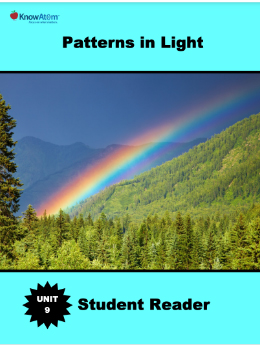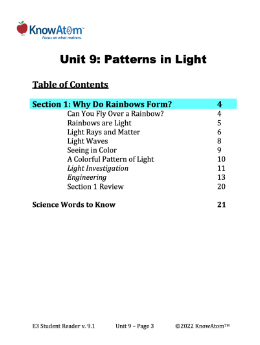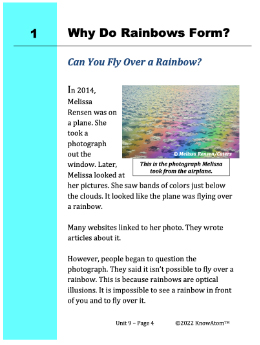Can You Fly Over a Rainbow?
In 2014, Melissa Rensen was on a plane. She took a photograph out the window. Later, Melissa looked at her pictures. She saw bands of colors just below the clouds. It looked like the plane was flying over a rainbow.
Many websites linked to her photo. They wrote articles about it.
However, people began to question the photograph. They said it isn’t possible to fly over a rainbow. This is because rainbows are optical illusions. It is impossible to see a rainbow in front of you and to fly over it.
Rainbows are Light
Rainbows are caused by light interacting with matter. All light is a form of kinetic energy that travels through space. The sun is the largest source of light on Earth.
Light is complex. There is still much that scientists don’t know about it. Scientists use different models to better understand how light moves and how it interacts with matter.
One model is a ray model. This model describes how light moves in a straight line. These straight-line paths are called light rays. When you see a narrow beam of light, it is actually a bundle of many light rays. The light rays are parallel. They move in the same direction as each other.
Another model is a wave model. This is because in many instances, light behaves in a similar way to sound waves and other kinds of waves. However, unlike sound waves, light doesn’t need to travel through matter. We’ll use both models to describe how light interacts with matter to form rainbows.










